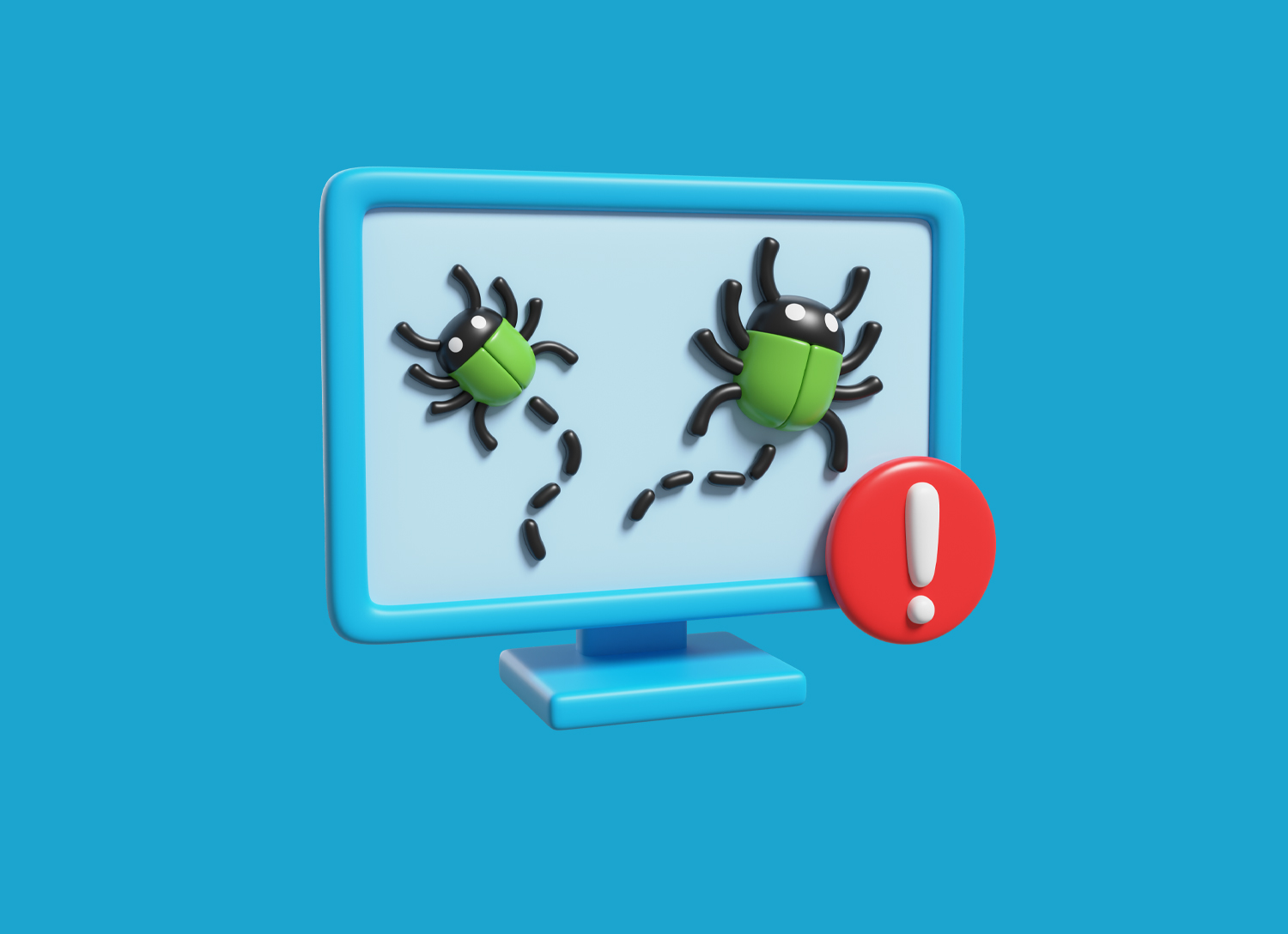Learn These 6 Ways to Overcome Common Programming Errors

They say your habits define you for who you are, and for a new programmer, a few key mistakes could lead to the development of potentially irrevocable bad habits. This will, in turn, drastically impact their career later on down the road, so it’s pertinent to make sure that programmers aren’t casually making major mistakes in their work.
We’ll talk about the 6 key issues that are faced by programmers these days, and how they can fix these problems. Let’s be honest, even if you are a programming veteran, you’ll have made at least one of these mistakes at some point in your life, and might even be making them to this day. So without any further ado, let’s start fixing some problems.
1.Staying Up-to-date With Technology
Keeping up with technology is a common challenge for programmers, as the field is constantly evolving and new tools and frameworks are continually being introduced. This can be especially challenging for new programmers, who may not be as familiar with the latest developments and find themselves struggling to keep up with the rapid pace of change.
One of the key issues related to keeping up with technology is the speed at which frameworks, tools, and libraries become outdated. For example, front-end frameworks are often updated every year or two, with new versions being released that offer improved performance and new features. This can be a challenge for new programmers, who may find it difficult to quickly adapt to the changes and learn the new tools and frameworks.
Another aspect of this problem is the pressure to stay current with the latest releases. As technology continues to advance, new iterations and updates are released more frequently, sometimes as often as once or twice a month.
This can be overwhelming for new programmers, who may feel pressured to keep up with the latest developments in order to stay competitive in the field.
Solutions
There are several steps that new programmers can take to overcome the challenge of keeping up with technology:
Stay Informed
Keeping abreast of the latest developments in the field is the key to staying current with technology. This can be done by regularly reading industry blogs and publications, attending conferences and workshops, and participating in online communities.
Networking
Networking with more experienced developers can be a great way to learn about new tools and best practices, as well as a great opportunity to ask for guidance.
Stay Flexible
Be open to learning and experimenting with new technologies and be willing to embrace change. Don’t get too comfortable with one technology, but always be looking for new tools that can improve your workflow and skills.
Focus On the Principles
While it’s important to stay current with the latest tools and technologies, it’s also important to understand the principles and concepts that underlie them. By focusing on these underlying principles, you’ll be better prepared to adapt to new technologies as they emerge.
Prioritize
It’s not possible to be an expert in all things, so it’s important to prioritize the technologies and skills that are most relevant to your current role or that you think will be in the near future.
Be Patient With Yourself
Be patient and kind with yourself, recognizing that it’s impossible to know everything and that you’ll make mistakes along the way. The important thing is to learn from those mistakes and keep moving forward.
2. Security Loopholes
Security threats are a serious concern for programmers, as data is a valuable commodity and hackers are constantly looking for ways to infiltrate systems and steal sensitive information. This is particularly problematic for new programmers, who may not have as much experience with the best security practices and may overlook security loopholes in their code.
New programmers often prioritize delivering error-free code over ensuring that the code is secure. This can lead to security loopholes being overlooked, which can make it easy for hackers to infiltrate the system and steal sensitive information.
This is a serious problem, as clients rely on programmers to keep their information safe, and a security breach can have serious consequences.
Solutions
In order to prevent security breaches and potential malpractice on the programmer’s end, these are the key steps that every coder should incorporate in their workplace.
Incorporate Security in the Software Development Life Cycle (SDLC)
Make security an integral part of the software development life cycle, and include it in all phases of the project. This means, conducting threat modeling, and having regular security reviews, testing, and audits to identify vulnerabilities and fix them before deployment.
Learn About the Security Standards
Familiarize yourself with security best practices and standards such as OWASP Top 10, OWASP Application Security Verification Standard (ASVS), OWASP Proactive Controls, NIST standards, PCI DSS (Payment Card Industry Data Security Standards), HIPAA (Health Insurance Portability and Accountability Act), etc. This will in turn help you to understand the key risks and how to prevent them.
Use Security Libraries and Frameworks
Rather than trying to build security features from scratch, use existing security libraries and frameworks. They can help you quickly implement best security practices and reduce the risk of introducing vulnerabilities into your code.
Stay Informed About the Latest Security Threats
Keep updated with the latest security threats and trends, by following security news and publications, attending conferences, participating in online communities, and subscribing to security mailing lists or newsletters. This will help you to stay aware of the latest attack vectors and the tools and techniques used by hackers and will help you to prepare your systems better to defend against them.
3. Keeping Up With Deadlines
In the fast-paced world of technology, it’s not uncommon for employers and clients to expect programmers to deliver high-quality code quickly. This can put pressure on programmers to move quickly, without fully planning out the project and conducting a thorough analysis of the problem at hand.
As a result, programmers end up making make logical errors, which can lead to hours of wasted time rewriting code that could have been avoided if more time had been spent on planning and preparation. This is further complicated by the fact that writing exceptional code in a short period of time is not always possible.
It’s important to note that, rushing into code without proper planning and analysis can lead to many issues like creating spaghetti code, making it harder to maintain, not meeting the client’s requirements, and ending up having to redo the work.
Solutions
Try adding these steps to your programming process to produce more coherent and manageable code.
Conduct Thorough Analysis and Research
Before diving into the coding process, conduct a thorough analysis of the problem and research the best solutions. This can include interviewing stakeholders, reviewing existing documentation, and conducting market research to understand the current landscape and identify the best approach.
Set Realistic Timelines
Set realistic timelines for the project, taking into account the time needed for research, planning, development, testing, and debugging. This will help ensure that the final product is delivered on time and meets the client’s requirements.
Practice Agile Development
Agile development methodologies like Scrum, Kanban, etc can help ensure better coordination and communication between team members, which can help reduce the number of errors and rework and increase efficiency.
Test and Debug
Before deployment, thoroughly test and debug the code to identify and fix any errors or bugs. This will help to ensure that the final product is of high quality and meets the client’s requirements.
4. Know-It-All
It’s natural for new programmers to feel a sense of accomplishment when they’ve written a program that runs without any bugs.
However, with that feeling of accomplishment, it can be easy to fall into the trap of thinking you know everything there is to know about programming.
It’s essential to remember that programming is a field that is continually evolving, with new technologies, frameworks, and tools emerging all the time. Even the most experienced programmers continue to learn, explore and improve their skills, to keep up with the latest trends and advancements.
Solutions
These are a few steps that new programmers should keep in mind if they start thinking that they knew everything about programming.
Seek Out New Challenges
Continuously push yourself to work on more complex projects and explore new technologies, languages, and frameworks. This can help you to stay motivated, improve your skills and gain new perspectives.
Stay Humble
Be open to receiving feedback and learning from others, and don’t be afraid to ask for help or guidance from more experienced programmers.
Keep Learning
Sign up for online courses, attend workshops and conferences, read books, and participate in online communities related to programming.
5. Not Keeping Backups
Not properly backing up your code can be a costly mistake for new and experienced developers alike. Without proper code protection, even a small mistake or technical glitch can lead to years of hard work going down the drain.
New developers need to instill habits for regularly and consistently backing up their code, whether they are working individually or as part of a team. Without regular backups, you are at risk of losing important work and potentially having to start from scratch.
Solutions
Backing up your code even up to several older iterations has become super easy, thanks to newer technology. Try to implement these habits in your work life to safeguard your code from accidental loss.
Implement a Version Control System
Use a version control system like Git, Mercurial, or Subversion to track changes and store multiple versions of your code. This will allow you to revert to a previous version of your code if necessary, and also make it easy to collaborate with other developers.
Set Up Automatic Backups
Configure automatic backups of your code to a cloud service or an external hard drive. This way, you can ensure that your code is backed up frequently and regularly, reducing the risk of data loss.
Use a Cloud Backup Solution
Consider using a cloud back-ups solution such as AWS, Azure, or Google Cloud, which can provide automatic versioning, encryption, and other security features on top of a backup.
Keep Multiple Copies
Keep multiple copies of your code in different locations. This way, if one copy is lost or damaged, you’ll have others that you can rely on.
6. Using Someone Else’s Code
Working with code written by someone else can be challenging, especially for new programmers. The original developer may no longer be available to provide guidance or answer questions, leaving you to navigate the code on your own. In some cases, the code may be poorly written or difficult to understand, leaving you struggling to make any sense of it.
In a worst-case scenario, office politics can also come into play. If your colleagues had a difficult time working with the previous developer, they may be unwilling to help you understand their code.
This can lead to frustration as you attempt to fix errors and bugs, only to find that the code still doesn’t function properly. Without understanding why the code doesn’t work, it can be tempting to try different approaches or copy and paste code from other sources.
While experimenting with different approaches may provide a short-term solution, it’s important to remember that if you don’t address the underlying logic issues, you’re likely to encounter similar problems in the future.
Solutions
While the best solution to this problem will always be to get in touch with the original programmer who wrote the code, there are several steps you can take to make the best of a bad situation.
Document Your Understanding
As you work through the code, take notes and document your understanding of how it works. This will help you to keep track of what you’ve learned and make it easier to refer back to when you encounter issues.
Ask Questions
If possible, don’t be afraid to ask questions of other team members or more experienced colleagues. They can provide valuable insight and guidance, helping you to better understand the code.
Understand the Architecture and Design Pattern
Try to understand the overall architecture and design pattern of the code, this will give you a general understanding of how it functions.
Conclusion
It is important for programmers to take a close look at their work practices and make sure that they aren’t the victim of these problems.
Using one of the many provided solutions for each problem can save your day, and might even make you look back and thank us.




